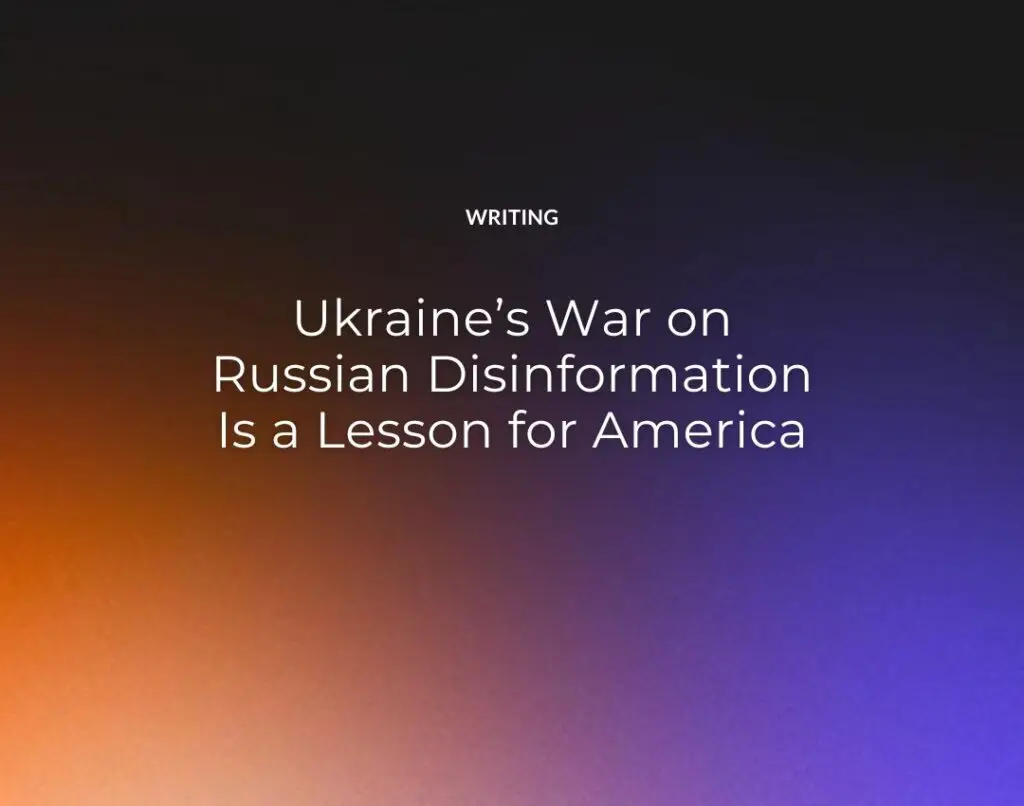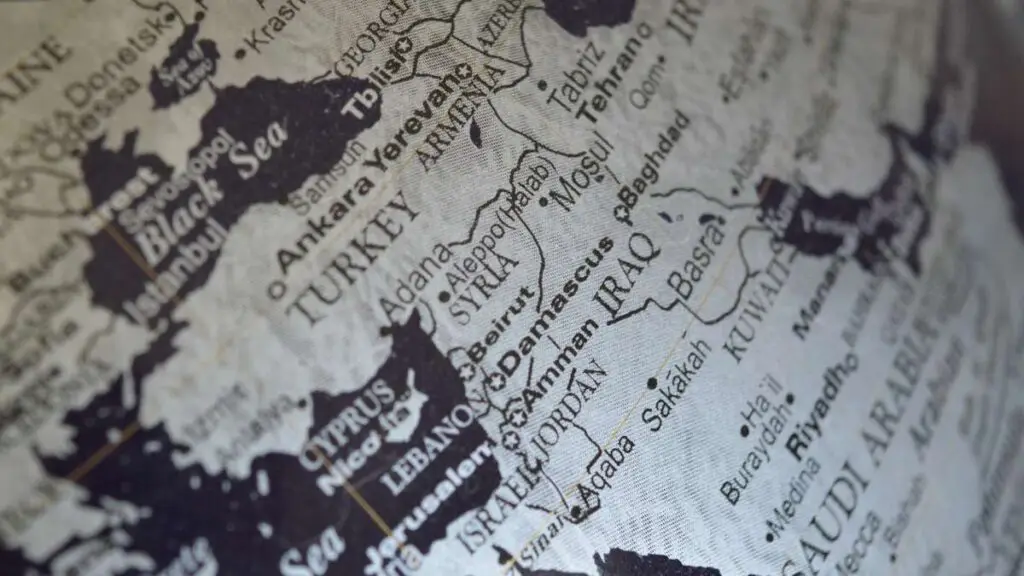By Geoffrey Cain
The New Republic
Mar 30, 2019
Forget the Mueller report. Russia is still meddling in democracies everywhere, and Ukraine is trying to fight back.
The eighth and ninth graders didn’t realize their teacher was wrapping another skill inside their classes: how to spot fake news and hate speech. Students learning about world history also learned about how propagandists could manipulate the historical narrative. Language and literature students learned about the political uses of language. Art students learned how to check whether photographs had been manipulated, or video footage was being deployed as an emotional weapon.
Long before Russian fake news and troll farms roiled American politics, Ukraine was Russia’s testing ground, a guinea pig in the bigger disinformation wars to come. Classroom education like this is one of the ways Ukrainians are fighting back. The education group IREX, working with the Ukrainian government, rolled out the pilot project Learn to Discern in 50 schools in four cities across the country in September 2018. Compared to students who didn’t get these lessons, the group’s report released last Friday declared, those receiving Learn to Discern training were twice as likely to detect hate speech, 18 percent better at identifying fake news stories, 16 percent better at sorting out fact from opinion, and 14 percent more knowledgeable about the role of the news media industry. IREX plans to expand its pilot curriculum to the U.S.
With Ukraine’s national elections approaching on Sunday, and American elections approaching next year, Ukraine’s story can be the U.S.’s biggest lesson for how to prepare for more Russian disinformation and cyber-warfare. Despite the now ample body of evidence that Russian internet campaigns were a significant force in the 2016 presidential election, the story began well before Trump’s presidency, when Russian trolls and commentators began drumming up the idea of ethnic unity with the Crimea, the strategic land jutting out into the Black Sea. After protesters ousted the Russia-friendly president of Ukraine in February 2014, militias claiming to be acting in the name of the Russian majority of the Crimea seized the peninsula. The Crimea was annexed into Russia a few weeks later. The ongoing and little-covered civil war in eastern Ukraine has since amassed a death toll of more than 13,000.
The Crimean annexation was an early masterstroke of fake news and pseudo-history that set the tone for what was to come—a Russian hybrid playbook of geopolitical and military advances into strategic regions alongside a propaganda war. Fake news plunged parts of Ukraine into a post-truth, alternate reality. President Vladimir Putin’s disinformation machine convinced his supporters that fascists and enemies lurked everywhere, and that only Russia could protect its supposed brethren against the hysterical mobs in the capital, Kiev, agitating for Western imperialism.
When Putin unleashed similar disinformation tactics during the run-up to Trump’s 2016 election, Ukrainian and Russian journalists knew the playbook.
But if anything, Putin underestimated the resolve of Ukrainians, whose national identity—as a country founded only in 1991, with large regions historically a part of Poland, Russia, and the Ottoman Empire—turned out far stronger and more resilient than many thought. “Most Ukrainians recognize exactly what Russia is doing, and they don’t like it,” James Appathurai, the NATO Secretary General’s Special Representative for the Caucasus and Central Asia, told me. Russian disinformation “is not succeeding,” he said.
What, exactly, is Russia doing in Ukraine? Before the Crimea annexation, Russia’s FSB security service took over the servers of a social media network popular in Ukraine, an easy venue for blasting propaganda, and giving it access to pictures, locations, and personal data on 16 million Ukrainians. In the year prior to the Russian navy’s seizing of three Ukrainian ships in the Sea of Azov in November 2018, Russian propaganda spread falsehoods that Ukrainian authorities were dredging its seabed in preparation for the residence of a NATO fleet, and that Ukraine had infected the sea with cholera. Russian hackers have attacked the electrical grid, leading to crippling blackouts, and have attempted to gain access to electoral voting systems.
When Putin unleashed similar disinformation tactics during the run-up to Trump’s 2016 election, Ukrainian and Russian journalists knew the playbook, even as U.S. media were slow to take notice. By the mid-2010s, when the world was just realizing social media could be a destructive political force, the Ukrainian government was among the first to lobby hard for the help of Facebook and Twitter, only to get the brush-off. The social media sites have since realized their errors, taking down state-tied accounts in Russia and Iran; Facebook announced a ban on white supremacist content on Wednesday. Since 2014, Ukraine has stepped up its leaky cyber-defenses, upgrading its software systems and teaching government staff to recognize server attacks and viruses.
Perhaps most interestingly, Ukraine has ferreted out fake narratives in bottom-up campaigns through projects like the IREX’s training of eighth and ninth graders to spot fake news, and through the aggressive exposure of fake news on StopFake.org. It’s also learned to treat media outlets like RT as state actors, rather than regular media companies, and has taken the brash step of blocking hundreds of websites without court orders, several of them popular Russian websites. In the West, such censorship would be unthinkable. But the U.S. has seen a movement to unmask and expose state propaganda actors, rather than let them operate in the same vein as any old news source. In 2017, RT registered as a foreign agent in the U.S. at the request of the Department of Justice. How many more propaganda arms remain unregistered?
As Ukraine heads to the polls on Sunday to elect a president for the second time since protesters overthrew Russian influence in the form of President Viktor Yanukovych, the results will resonate far beyond Eastern Europe. Ukraine’s security service has already alleged “several” Russian attacks against the central election commission—a charge Moscow denies. The presumption is that disinformation campaigns will target Yanukovych’s replacement, current president Petro Poroshenko, in particular.
Though the vote’s result remains uncertain, the frontrunner is Volodymyr Zelenskiy, a comedian with no political experience whom Ukrainians are calling a populist, and whose supporters plan to vote for him because they’re fed up with corruption and Ukraine’s sluggishness in joining the EU and NATO under the current Poroshenko presidency. In addition to the incumbent Poroshenko, Zelenskiy is up against former two-term prime minister Yulia Tymoshenko, who fell from grace after spending nearly two years in prison for abuse of power, a charge criticized by the European Union. The perception that she’s corrupt and untrustworthy has long tainted her popularity.
With a growing bottom-up movement, educational programs, and government pressure, the Ukrainian election will tell us what lies ahead—and whether Russia plans to step up its interference with new tactics and technologies. Whatever happens on Sunday in Ukraine, and in its parliamentary elections in October, will be a signal for how to protect our own institutions in 2020.
Geoffrey Cain, a foreign correspondent and author, writes about the growing struggles between the U.S., China and Russia.
The article was originally published in The New Republic
See Also:





